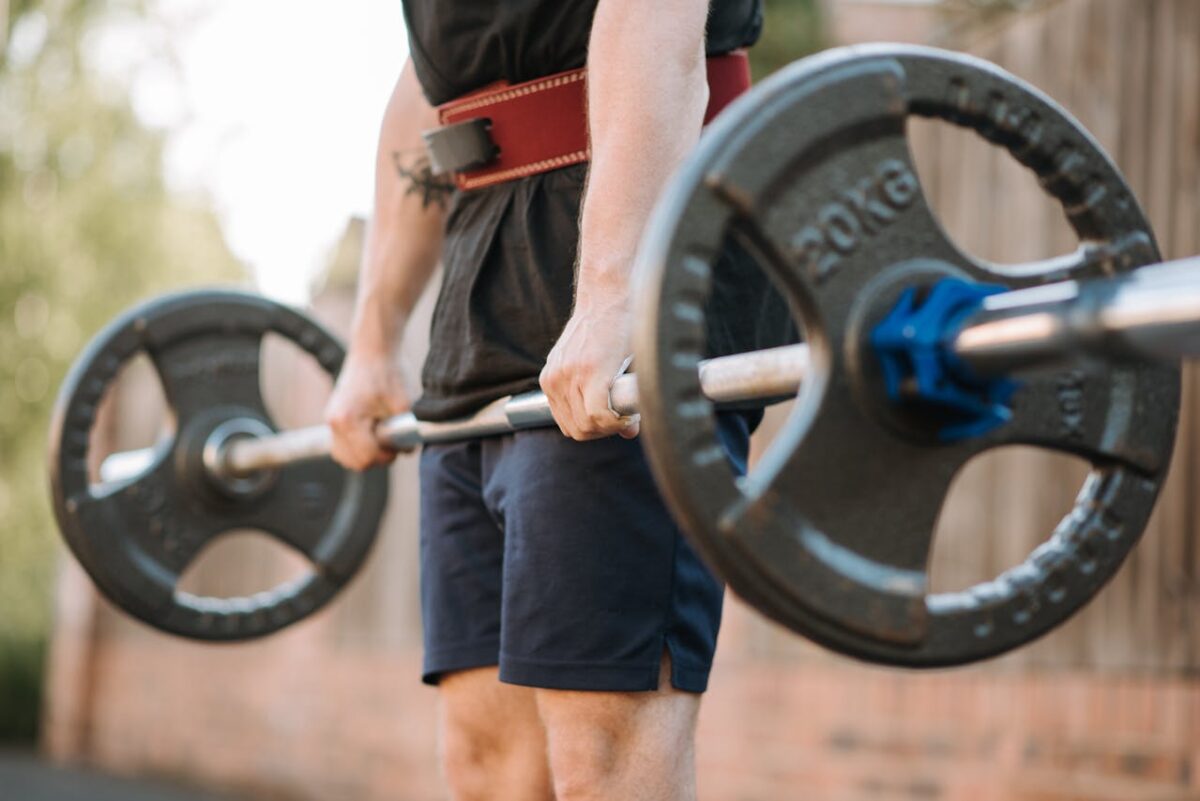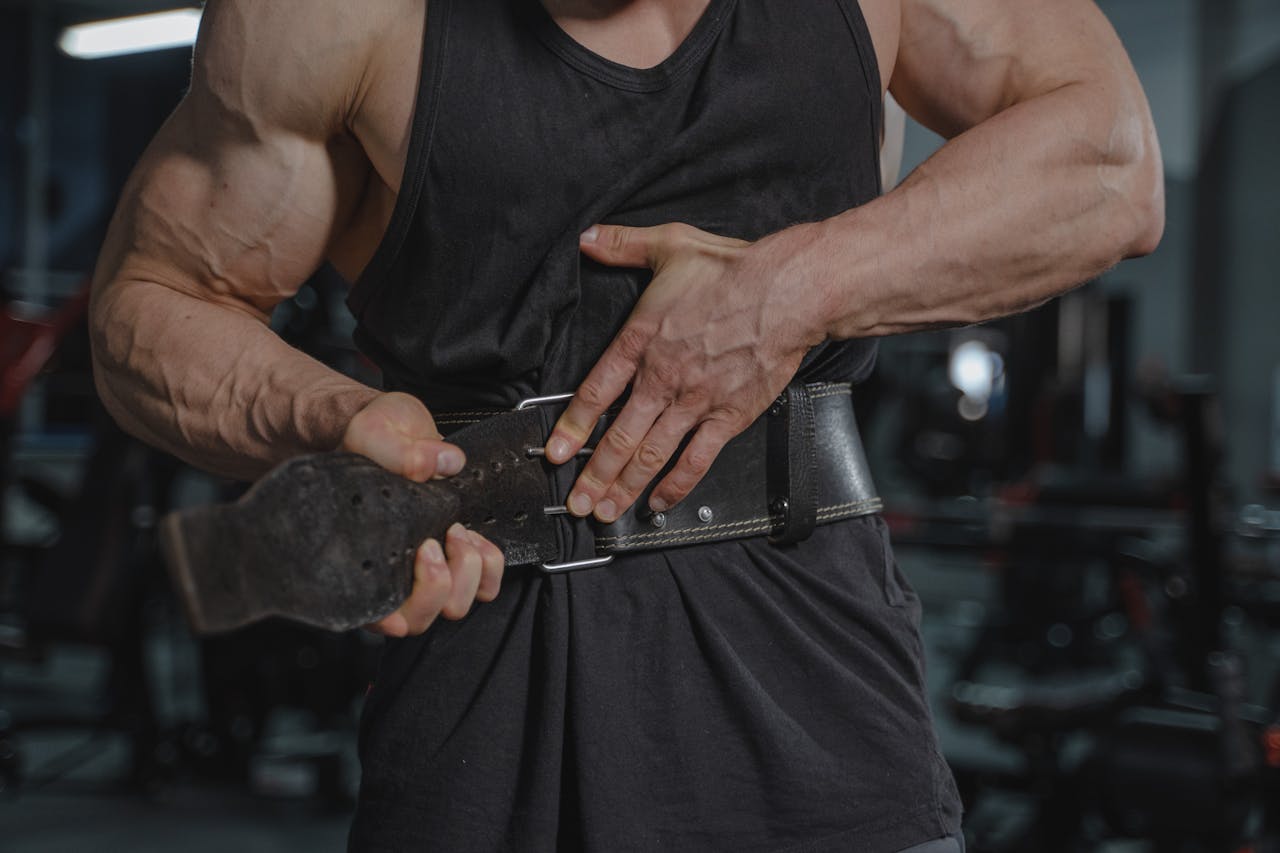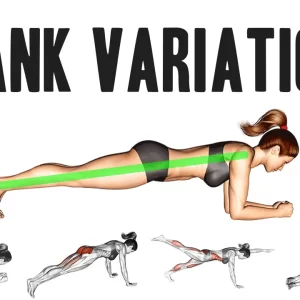Contents
A lifting belt becomes a critical accessory when you’re serious about weightlifting. But how tight should it really be? Let’s delve into the details to ensure you’re optimizing your workout without compromising your form or safety.
Choosing the Right Lifting Belt
Before considering tightness, selecting the appropriate lifting belt is crucial. Make sure to choose a brand that has a reputation for creating quality belts. Some popular names to choose from include Pioneer, Rogue, and Gymreapers. TuffWraps is another name that has increased in popularity. Despite being known for their wrist wraps, TuffWraps weightlifting belts have been a common choice for weightlifters and powerlifters in recent years. Check them out here: https://www.tuffwraps.com/collections/lifting-belts
What’s the Point of a Lifting Belt?
A lifting belt serves to enhance core stability and support during heavy weightlifting exercises. It works by providing external pressure around the abdomen and lower back, which increases intra-abdominal pressure. This creates a more rigid core, offering better support for the spine and potentially reducing injury risk during intense lifts.

The belt also acts as a proprioceptive cue, reminding lifters to brace their core properly. While it doesn’t directly increase strength, it can allow some lifters to handle heavier weights more safely, particularly in exercises like squats and deadlifts. However, it’s important to use a lifting belt judiciously and not rely on it as a substitute for proper form and technique.
What Affects Lifting Belt Tightness?
1. Material
The material of a lifting belt significantly influences its tightness and overall performance. Leather belts, being less flexible, provide more rigid support and maintain their shape better over time, allowing for consistent tightness across workouts. They often require a breaking-in period but offer superior durability. In contrast, nylon belts are more flexible and easier to adjust, making them more comfortable for some users but potentially less stable during heavy lifts.
2. Thickness
The thickness of the material also plays a role; thicker belts generally provide more support but may be less comfortable for certain body types or lifting styles. Some belts feature a combination of materials, like a leather exterior with a softer inner lining, aiming to balance support and comfort. The closure mechanism, whether it’s a prong, lever, or velcro, affects how precisely the belt can be tightened and how quickly it can be adjusted between sets or exercises.
3. Body Type
Body type affects lifting belt tightness in several ways. Athletic builds may wear belts evenly, while V-tapered or hourglass shapes might need strategic positioning to prevent slipping. Larger midsections often require wider belts, and shorter torsos may prefer narrower ones. Body fat percentage influences tightness; more fat means looser fit, while leaner individuals can wear belts tighter. Spinal curvature also impacts belt placement and evenness of tightness around the midsection.
4. Preference
Personal preference plays a significant role in determining lifting belt tightness. Some lifters prefer a very tight fit, believing it provides maximum support and stability, while others opt for a looser fit for greater comfort and range of motion. Experienced lifters often adjust tightness based on the specific exercise or weight being lifted, tightening more for maximal efforts and loosening for warm-up sets or less demanding movements.
Some prefer consistent tightness across all lifts for familiarity, while others vary it strategically. The lifter’s breathing technique also influences preference; those who use the Valsalva maneuver may prefer a tighter belt to enhance intra-abdominal pressure, while those focusing on diaphragmatic breathing might choose a looser fit. Additionally, personal comfort thresholds, past experiences with injuries, and individual body awareness all contribute to a lifter’s preferred belt tightness.
Common Mistakes to Avoid
1. Wearing Tight Clothes
Wearing overly tight clothes during weightlifting is a common mistake that can negatively impact performance and comfort. Tight clothing restricts movement, potentially limiting your range of motion in exercises that require full body flexibility, such as squats or overhead presses. It can also impede proper breathing techniques, which are crucial for bracing and maintaining core stability during lifts.
Tight garments may cause discomfort or chafing, distracting you from focusing on proper form and technique. They can also interfere with your body’s natural cooling mechanisms by limiting air circulation and sweat evaporation, potentially leading to overheating during intense workouts.
2. Tightening the Belt Too Much
Tightening a lifting belt too much can be counterproductive. An overly tight belt restricts proper breathing and core bracing, potentially reducing stability during lifts. It may create a false sense of security, leading to over-reliance on the belt instead of engaging core muscles.
Excessive tightness can cause discomfort, limit range of motion, and even increase blood pressure dangerously during heavy lifts. The ideal tightness allows for a full, deep breath while providing support, enhancing performance without becoming a hindrance or safety risk.
3. Keeping the Belt Too Loose
Wearing a lifting belt too loosely undermines its purpose and can be counterproductive. A loose belt doesn’t provide adequate core and lower back support, failing to increase intra-abdominal pressure effectively. It offers poor proprioceptive feedback, making it harder to maintain proper form.
The belt may shift during exercises, causing inconsistency and distraction. It also doesn’t assist in force transfer between the lower and upper body, potentially limiting power in lifts. Without proper tension, the belt can’t provide a surface to brace against, reducing core engagement and stability. This can increase injury risk, especially during heavy lifts.
How Tight Should Your Belt Be for Deadlifts?
For deadlifts, your lifting belt should be snug but not excessively tight. It should sit just above your hip bones and below your rib cage, feeling equally tight around your entire midsection. You should be able to take a deep breath into your belly and brace against the belt, with enough room to fit about two fingers between your body and the belt when standing upright.
The belt should provide support without impeding your ability to get into the starting position or bend at the hips to reach the bar. When you brace your core at the start of the lift, you should feel a noticeable increase in intra-abdominal pressure.
The ideal tightness allows for proper breathing, movement, and core engagement while providing maximum support during the lift. However, it may take some experimentation to find your optimal belt tightness, as it can vary based on body type, lifting style, and personal preference.
How Tight Should Your Belt Be for Squats?
For squats, your lifting belt should be tighter than for deadlifts but still allow proper breathing and movement. It should sit snugly around your midsection, covering your lower back and abdominal area.
The belt should be tight enough that you can only fit one finger between it and your body when standing upright. This tightness ensures maximum support and helps increase intra-abdominal pressure during the squat. However, you should still be able to take a full, deep breath and expand your core against the belt. The belt shouldn’t restrict your ability to reach proper depth in your squat or cause discomfort at the bottom of the movement.
How Tight Should Your Belt Be for Bench Press?
For bench press, your lifting belt should be slightly looser than for squats or deadlifts but still snug enough to provide support.
The belt should sit comfortably around your lower back and abdomen, allowing for full chest expansion during breathing. You should be able to fit about two fingers between the belt and your body when lying on the bench. This looser fit accommodates the arched position many lifters use in bench press, preventing the belt from digging into your ribs or impeding your ability to achieve proper form.
Final Thoughts
The ideal tightness of a lifting belt varies based on exercise type, personal preference, and body dynamics. Experimenting with different levels of tightness during training sessions can help you determine what works best for your lifting style and comfort.
Img sources:
- https://www.pexels.com/photo/faceless-bodybuilder-lifting-barbell-on-street-in-daylight-4793254/
- https://www.pexels.com/photo/man-in-black-tank-top-putting-weightlifting-belt-5327461/



